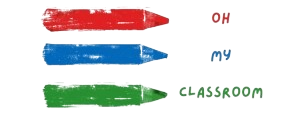Decorating classroom doors can be a fun and creative way to engage students while adding a touch of educational flair to the learning environment.
When it comes to math door decoration ideas, the possibilities are endless, ranging from vibrant and visually appealing designs that showcase mathematical concepts to inspirational quotes that motivate students to embrace the world of numbers.
Whether you’re a math teacher looking to inspire your students or a school decorator aiming to foster a love for math, we will provide you with a variety of imaginative and engaging math door decoration ideas to transform any ordinary classroom door into a mathematical masterpiece.
Mathematical Reflections and Resolutions:

Encourage students to reflect on their mathematical growth and set goals for the future by creating a “Mathematical Reflections and Resolutions” door decoration. Have each student write a reflection on their math journey, highlighting their achievements and challenges. Additionally, ask them to set mathematical resolutions or goals for the upcoming school year. Display these reflections and resolutions on the door to inspire self-awareness, motivation, and a commitment to continuous improvement in math education.
Mathematical Puzzles and Challenges:

Engage students in a series of math puzzles and challenges that lead to the creation of a door decoration. Provide age-appropriate math problems or brainteasers that require solving. As students work through these puzzles, they earn pieces of a larger image or design. Once they’ve successfully completed all the challenges, they can assemble the pieces to reveal the final door decoration. This interactive approach not only reinforces mathematical skills but also adds an element of excitement and accomplishment as students watch the door decoration come together piece by piece.
Mathematical Equation Graffiti Wall:

Turn your classroom door into an interactive graffiti wall of mathematical equations and solutions. Provide whiteboard markers or chalk and invite students to write equations, formulas, and mathematical riddles on the door throughout the week. Encourage them to challenge their peers with math problems or leave clues that lead to hidden messages. This dynamic and ever-changing door decoration not only keeps math at the forefront of students’ minds but also fosters a sense of ownership and collaboration as they contribute to the evolving mathematical landscape.
Related: Can a Teacher say Shut up to a student in Classroom?
Math Storyboard Display:
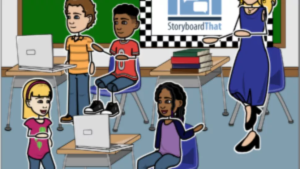
Challenge students to create a storyboard that tells a mathematical story. They can choose a specific mathematical concept or historical mathematician and illustrate a visual narrative on the door. Encourage them to include characters, dialogue, and plot twists that revolve around math. This activity not only promotes creativity but also allows students to dive deeper into mathematical history and concepts as they bring their stories to life. The end result will be an informative and captivating door decoration that sparks curiosity and imagination.
Mathematics in Everyday Life Showcase:
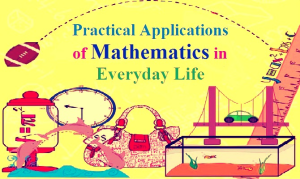
Challenge students to identify and document instances of mathematics in their daily lives. Assign each student or group a specific aspect of their routine, such as measuring ingredients for recipes or calculating distances while traveling. Students can then create visual displays or infographics showcasing how math is an integral part of their everyday experiences. This activity helps students recognize the practical applications of mathematics in real life and can lead to a door decoration filled with relatable examples.
Math Symbol Scavenger Hunt:

Organize a math symbol scavenger hunt as an interactive and educational door decoration activity. Create a list of math symbols and concepts relevant to the curriculum and hide them around the classroom. Provide clues that guide students to each symbol’s location. As students find the symbols, they can use them to create a math-themed collage on the classroom door. This activity encourages students to explore the world of math, reinforces their knowledge of symbols, and promotes critical thinking as they decipher clues to complete the decoration.
Mathematical Puzzle Mosaic:

Engage students in creating a mosaic-style door decoration by using math puzzles as the building blocks. Provide a variety of mathematical puzzles, such as Sudoku, crosswords, or logic problems. Each student or group can solve the puzzles and color code the solutions, with each color representing a different mathematical concept or answer. Assemble the completed puzzles on the classroom door to create a vibrant and visually captivating mosaic of math challenges.
Mathematics in Architecture:

Explore the relationship between mathematics and architecture by having students design and construct architectural models based on mathematical principles. Provide materials like cardboard, toothpicks, and glue, and ask students to create structures that incorporate mathematical concepts such as symmetry, proportion, or tessellation. Once the models are complete, arrange them on the classroom door to form a visually striking architectural display that showcases the beauty of mathematics in design and construction.
Related: 20 Easy Volcano Activities for Preschoolers
Mathematics Through Art:
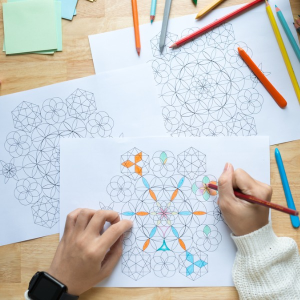
Combine mathematics and art by challenging students to create a door decoration that represents mathematical concepts through various artistic mediums. Allow them to choose from options such as painting, sculpting, or even creating a mosaic. Encourage them to think about how color, shape, and texture can be used to visually convey mathematical ideas. This hands-on activity provides an opportunity for students to explore the intersection of math and art while developing their artistic skills and mathematical understanding.
Mathematics and Music Fusion:

Explore the mathematical principles behind music and sound by incorporating them into a unique door decoration. Assign different musical elements, such as rhythm, harmony, or musical notation, to student groups. They can create visual representations of these elements on the door using musical symbols, notes, and mathematical equations that relate to music theory. This interdisciplinary activity not only enhances students’ understanding of both math and music but also highlights the connections between these two disciplines in a visually captivating way.
Mathematics in Nature Showcase:
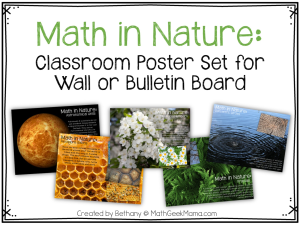
Invite students to explore the presence of mathematical patterns and concepts in the natural world. Assign each student or group of students a specific natural phenomenon, like the Fibonacci sequence in sunflowers or fractals in snowflakes. They can research and gather images or create artistic representations of these mathematical patterns and their occurrences in nature. Display these representations on the classroom door to create a stunning showcase of how mathematics is intertwined with the world around us, fostering an appreciation for the subject’s real-world applications.
Math Board Game Extravaganza:

Combine math learning with fun by having students design and create their own math-themed board games. Provide them with materials like cardboard, markers, and dice, and encourage them to invent board games that involve mathematical operations, strategy, and problem-solving. Once the games are complete, students can take turns playing them and refining their designs. The winning game can serve as the inspiration for the classroom door decoration, with elements from the game incorporated into the design.
Mathematical Quotes and Inspirations:

Encourage students to explore the world of famous mathematicians and their words of wisdom. Have them research and select inspirational quotes from mathematicians like Pythagoras, Albert Einstein, or Ada Lovelace. These quotes can then be beautifully displayed on the classroom door along with artistic representations of the mathematicians and their contributions. This activity not only exposes students to the historical figures who shaped mathematics but also motivates and inspires them to embrace the subject.
Mathematics and Technology Integration:

Dive into the realm of technology by having students create QR codes that link to math-related resources, videos, or interactive simulations. Each student or group can research a specific math topic and generate a QR code that provides access to an educational resource related to that topic. These QR codes can be arranged on the classroom door to form a visually appealing and interactive decoration. Students and visitors can use their smartphones to scan the QR codes and delve deeper into various mathematical concepts and resources.
Mathematical Book Cover Designs:

Combine literature and mathematics by asking students to design book covers for fictional math-themed books. Encourage them to invent titles, authors, and captivating cover art that incorporates mathematical elements. This creative activity not only reinforces mathematical concepts but also promotes storytelling and design skills. The best book cover designs can be featured on the classroom door, giving it a bookshelf-like appearance with the fictional math books showcased as a captivating door decoration.
Mathematics Around the World:

Broaden students’ horizons by exploring how mathematics is used in different cultures and regions. Assign students or groups a specific country or culture, and have them research and present mathematical contributions or applications unique to that place. They can create visual representations of these mathematical concepts, such as geometric patterns in Islamic art or Mayan numerals, and display them on the classroom door. This multicultural approach not only enriches students’ understanding of math but also promotes cultural awareness and appreciation.
Mathematical Symbols Collage:
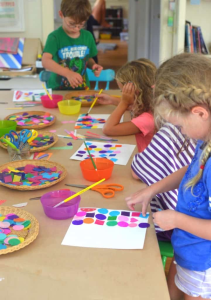
Challenge students to create a vibrant collage on the classroom door using mathematical symbols and equations. Provide them with colored paper, scissors, and glue, and encourage them to arrange the symbols and equations in visually appealing and artistic ways. This hands-on activity allows students to experiment with mathematical design while reinforcing their familiarity with key mathematical symbols. The end result will be a visually stimulating and mathematically informative door decoration.
Math Olympians Hall of Fame:

Recognize and celebrate students’ achievements in mathematics by dedicating the classroom door to a “Math Olympians Hall of Fame.” Highlight the accomplishments of top math performers by displaying their names, achievements, and even photos on the door. This not only motivates other students to excel in math but also instills a sense of pride and recognition among those featured. You can update the door regularly to showcase new accomplishments throughout the school year.
Mathematical Timeline of Discoveries:
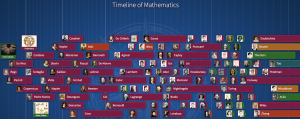
Create a dynamic and informative timeline of mathematical discoveries and breakthroughs on the classroom door. Assign different mathematical concepts or historical events to students or groups, and have them research and create visual representations of these milestones. Assemble these representations in chronological order to create a timeline that spans from ancient mathematical discoveries to modern advancements. This historical perspective helps students appreciate the continuous evolution of mathematics over time.
Mathematical Art Gallery:

Encourage students to explore the artistic side of math by organizing a mathematical art gallery on the classroom door. Provide various art materials and ask students to create mathematical-themed artworks, such as tessellations, symmetry designs, or optical illusions. Display these artworks on the door to transform it into a visually stimulating gallery of math-inspired art. This activity fosters creativity, artistic expression, and an appreciation for the aesthetics of mathematics.
Related: 25 Creative New Year Bulletin Board Ideas
